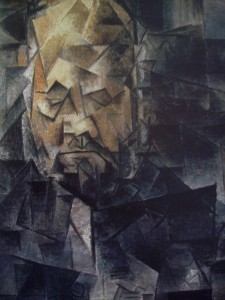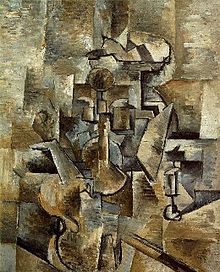
I paint objects as I think them, not as I see them~Pablo Picasso
There seldom comes a time when the relationship of two people can make such an impact on the world as that of Pablo Picasso and Georges Braque did when they introduced Cubism to Western art. It created a revolution in the art world, becoming the dawn of Modern Art.
The two men met in Paris in 1907, immediately becoming good friends. They kept art at the heart of their relationship as they anxiously experimented together with new ideas, constantly taxing each others ability to go further in their quest to abandon conventional notions about form and space.
At the time, Picasso was interested in the art based on the angular figures from Iberian and African carvings. He was enamored by them, feeling they encouraged his artistic talents. Braque brought to the table a different perspective. His interest was in Paul Cezanne’s work, the way Cezanne used a technique in which he built up landscapes with blocks of color, challenging ideas on the connection of form and perspective.

Together, the two men threw out the principles governing Western art since the beginning of the Renaissance, replacing a fixed perspective with a multitude of viewpoints. In their works, there was no sense of distance, or to make figures appear solid. Very little modeling or shading was used. They restricted color and flattened space. Their technique was able to bring together in one painting many different aspects rearranged, creating a new vision of the original subject. It was as if they were depicting the world around us in a completely new way.
The movement became known as Cubism, taken from a comment made by the art critic Louis Vauxcelles when the first results of the collaboration were shown in 1908. He noted that all the elements in the paintings were reduced “to cubes” in his article. The rest is history.
Be sure to sign up for the Art Center Information newsletter. We are going to give away a copy of Splash 14 to one of our members.
